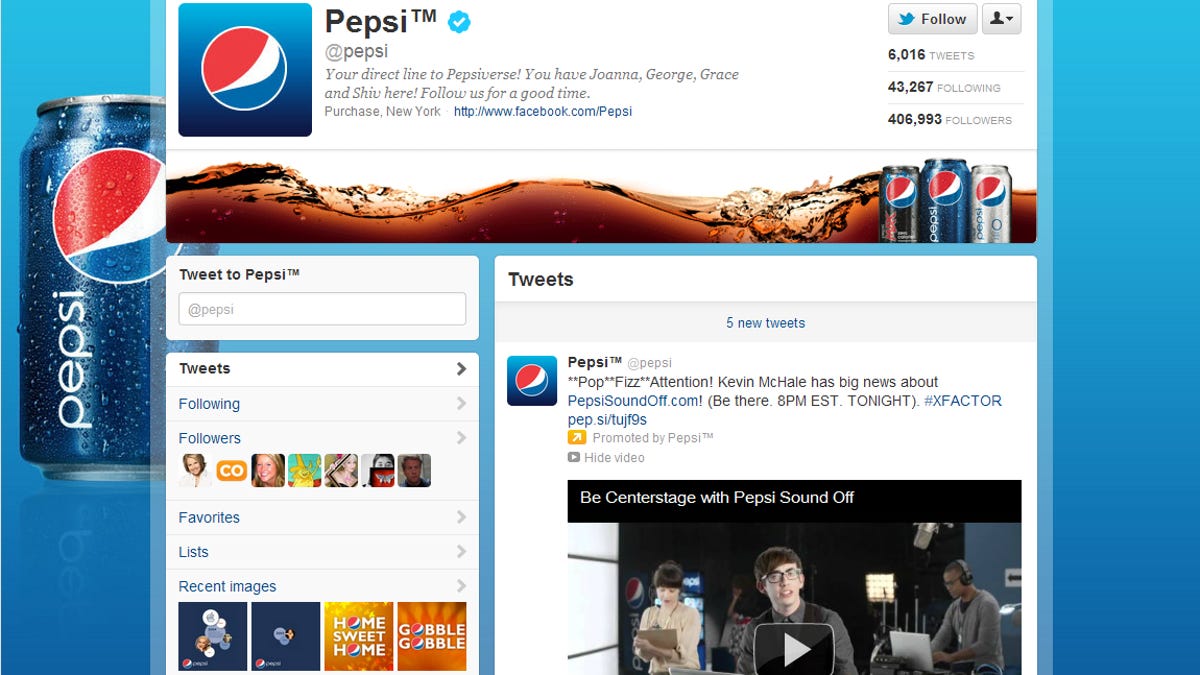Twitter, Facebook, Google+: Three-way brand page shootout
What's a marketer to do when faced with three competing, customizable social platforms?

Twitter has finally joined the modern world of marketing and branding by rolling out support for company brand pages in its redesign today.
Facebook got here first, of course, and Google+ joined in more recently. So if you're a marketer, you've got to be asking, what's the best platform for you to focus on?
Let's find the winning services in the important areas.
Reach: Facebook
Facebook wins this one, hands down. With a reported user base of over 800 million, if you want to put your brand on the platform where users are--and where they're talking to each other--Facebook is the place.
Twitter is likely in second place, probably with about 10 to 12% of Facebook's user base (depending on which sources you believe) but its social reflection model (retweeting) makes it more powerful than the raw numbers would indicate.
Google+, no matter what the numbers say, is new, is seen as the social network for geeks, and doesn't have the breakout appeal of the other networks. You can't say, "Find us on Google+" in an advertisement and expect people to know what you're talking about.
Facebook, again, wins on this front. A brand manager can make a Facebook page that does almost as much as a regular Web page, and with the added bonus of having a "Like" button in a standard position to encourage social sharing.
Facebook also lets managers create nice lists of related Facebook pages in the left-hand navigation.
Neither Twitter nor Google allow you to dump huge blocks of HTML into brand pages. Google+ does, however, have more post types than Twitter. A string of photos or embedded videos can make a Google+ brand page look like a photo album.
Twitter brand pages are, not surprisingly, lists of tweets. Brand managers can pin a single tweet (with an image) to the top of the stream, but the rest is just text and links.
Design: Twitter
While Facebook offers the most flexibility of design, giving managers access to the whole middle of the page (see Best Buy), Twitter allows its brand users to do a far better job of reinforcing their company's aesthetic.
Twitter gives managers the capability to change the color scheme of the entire brand page, as well as put in their own header art and background image. Check out these early examples of Twitter brand pages: Heineken, Dell, and Pepsi. They all share the same locked-down template, but reflect their corporate designs effectively.
Google+ allows designers to change company logo and header art, actually five little squares of header, but nothing else. The limitation can be used to good effect (Angry Birds) or mitigated through a mostly-white design (Hugo Boss).
Facebook is all about the Like. Some brands have millions (Best Buy has 5.5 million). These Likes are valuable, as each represents social network reflection out to, potentially, millions more people.
Facebook also makes it easy for brands to bribe users, by restricting content or features to users who have Liked their pages.
Twitter's interaction is about two things: The Follow and the @ Reply. While the Follow is the Twitter equivalent of the Like, a personal endoresement of a sort, Twitter's large and plain inclusion of the reply box on its brand pages encourages users to send public messages to and about brands. The reply box is somewhat misleading, though: It says, "Tweet to..." instead of "Tweet about..." But it looks like an effective way to get users to reinforce brands by posting items with their Twitter handles in them.
Google+ interaction design is a bit of a mess, in comparison. The main interaction points are the +1 and "Share this page" buttons, but I wager that most users don't know the difference, and they're right next to each other. Users can also comment on individual items on a Google+ page, but these will not have the same social spread as the stronger overall brand mentions that Facebook and Twitter have engineered into their designs.
Mobile: None of the above
Each of the three services presents a constrained view when called up on a smartphone. Designs are removed, and any HTML elements are stripped out and and replaced with lists of posts. The services look much the same, in fact, on claustrophobic mobile devices. They all become just lists of updates, with easy access to their platforms' primary social activities: Likes andcomments on Facebook, Retweets on Twitter, and Comments on Google+. None of the services offer brands a good, customizable mobile experience.
The winner
Facebook is where the power is, but Twitter's clean design and interaction model makes it an attractive and necessary secondary platform for marketers to work on.
Google+ doesn't have the features, reach, or clarity to compete with these two power players yet.
However, the clear and best course of action for a marketer or brand manager is to establish a presence on each platform. They can even reinforce each other to good effect.
Pepsi, for example, lists its Facebook page as the go-to link in its Twitter profile.

